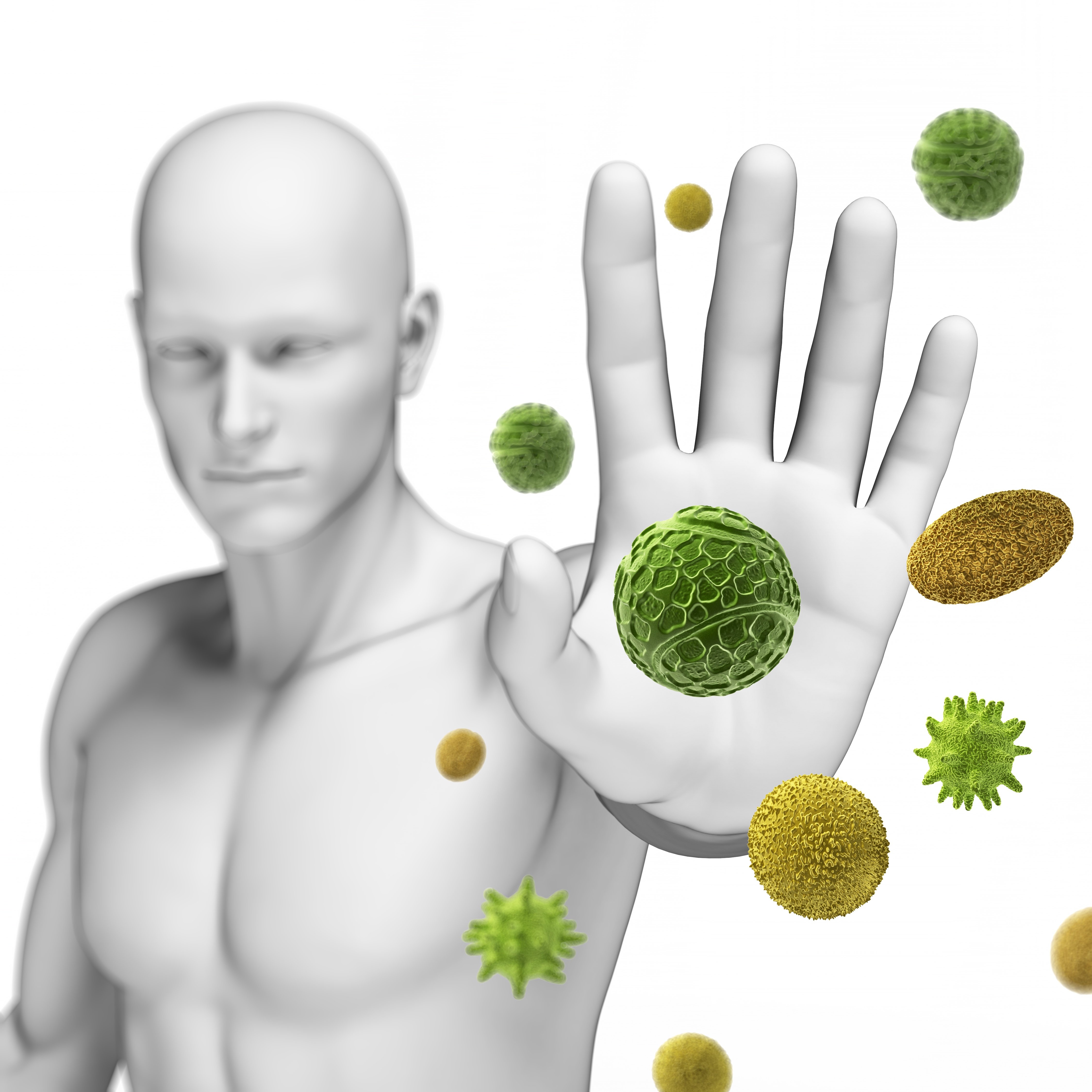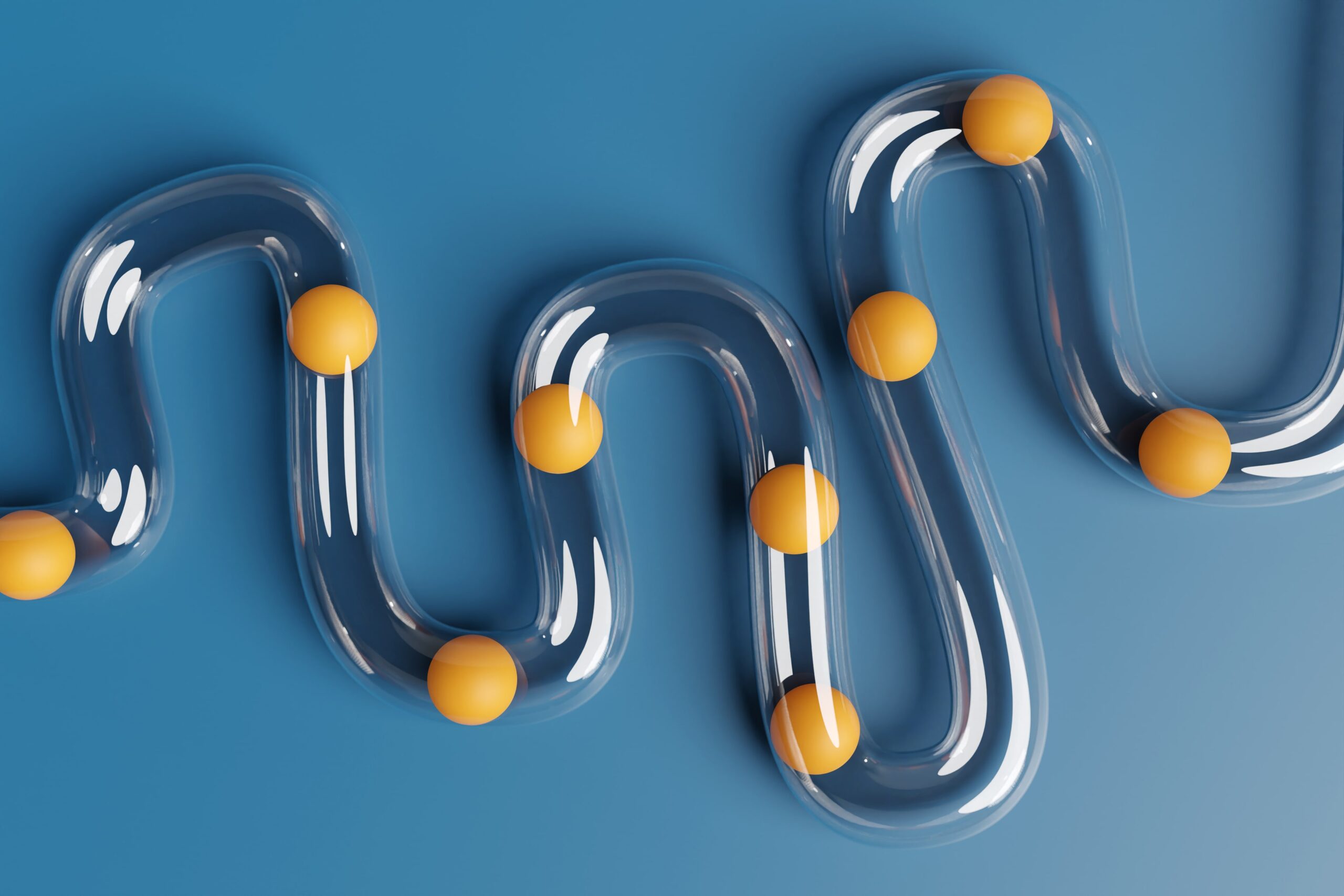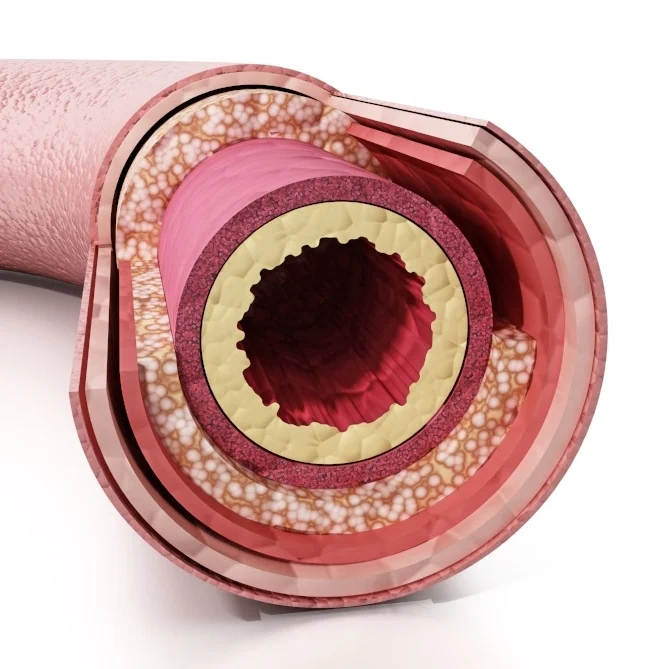Move over Vitamin C, Zinc, Elderberry, Oregano & other popular remedies, there’s a new sheriff in town for immune support.
It’s an oral supplement known as monolaurin – and I think everyone should have it as part of their home remedy toolbox.
Over 50 years ago, researcher Jon Kabara, Ph.D. was studying the unique properties of breastmilk. He wondered how the milk stayed free of bacteria once out of the body & discovered that breastmilk contained a unique medium chain fat called monolaurin.
Monolaurin is not just found in breast milk – it can be derived from the lauric acid in coconut oil. We use UltraLaurin by Inspired Nutrition.
Lauric acid is well known for providing the unique health properties of coconut oil – it comprises 50% of the volume of coconut oil. Coconut is known as the “tree of life” in areas where it grows naturally. Lauric acid accounts for many of its unique properties – including immune benefits.
Medium chain fats (MCTs) like lauric acid are well regarded for helping with weight management, energy production, seizures & epilepsy, critical care nutrition & immune support. Lauric, capric, and caprylic acid are the main medium-chain fats.
MCTs are limited in that they are a little irritating to the gut at higher intakes. MCT oil consists of just capric and caprylic acid, largely because lauric acid is too irritating to take by itself. For ketone and caprylic acid support, with some added antifungal and antimicrobial benefits, I use MCT Wellness Oil.
In contrast to lauric acid, the monoglyceride form of lauric acid known as monolaurin is tolerated when consumed by mouth. It offers wide antimicrobial properties against viruses, bacteria, fungi, and some mold & parasites.
When you consume coconut oil – a small percentage of it will be converted to monolaurin.
To get more potency & avoid issues of coconut such as allergies, sensitivities, or any unnecessary laxative effect – you can supplement with monolaurin & get many of the same benefits of coconut oil – but also really hone in on the antimicrobial benefits.
For year-round immune and gut support, I’m a strong supporter of spore probiotics like Megasporebiotic which is by far the most popular product we use and has been the subject of clinical trials with leaky gut and more.
Taking monolaurin year-round may reduce valuable gram-positive bacteria like Lactobacilli or Bifidobacteria – so we often supplement with either TrubifidoPRO or TheralacPRO – during or following a round of monolaurin.
I also often provide targeted prebiotic fuel such as the specific saccharides found in MegaPre by Microbiome Labs or partially-hydrolyzed guar gum (PHGG) known most commonly as SunFiber.
Generally, we use monolaurin for 1-3 months and up to 6 months for some complex clients who need to work up their intake more slowly.
Monolaurin Discovery
If there was a Mount Rushmore of research giants in the field of medium chain fats & coconut oil – Dr. Jon Kabara, Ph.D. would be on it.
His work in the ’60s & ‘70s spearheaded the use of medium-chain fats in cosmetic formulations & food safety protocols instead of synthetic ingredients like parabens – taking advantage of their natural stability, as well as their preservative (antimicrobial) properties.
He lectured widely against trans fats and for the use of coconut oil and other saturated fat-containing foods back in the 1960s and ’70s. These same ideas gained mainstream acceptance only in the last decade.
From 1998-2000, he decided to try something unique – could we get the same antimicrobial benefits & subsequent benefits for immunity if humans took monolaurin orally as a supplement?
Monolaurin is safe & non-toxic – had been used as a food and cosmetic preservative for years. It is found in breast milk & is easily metabolized. Any excess would promote ketone formation – a source of clean energy for the brain and body. Excess intake is also not stored as fat & does not have a negative effect on cholesterol ratios.
Monolaurin is derived in bulk from lauric acid which is found most prevalent in coconut oil.
Dr. Kabara suspected that if we supplemented with monolaurin, we would yield the same antiviral, antibacterial, & antifungal benefits that he had been using monolaurin for in other commercial applications.
Monolaurin Benefits for Immunity and Beyond
I learned about monolaurin first while studying for my master’s degree in clinical nutrition.
During a lecture, our instructor mentioned a side story about how he was using monolaurin with some critical care patients in a hospital setting – & seeing interesting results.
The story wasn’t part of his formal presentation & he mentioned if anyone wanted to learn more to see him after class.
I was the only student that took him up on his offer. The next class session he brought me a little yellow brochure on monolaurin with old-school type that I still have in my possession today.
That moment changed the whole trajectory of my career in nutrition – and, most importantly, helped me change the lives of hundreds of clients.
I was still a student at the time, and so it wasn’t until after graduation that I needed to find a supplier of this special ingredient.
The first client I put on monolaurin was an older man who had been struggling with Shingles (caused by the reactivation of the Herpes zoster virus) for the previous 6 months. He was a guitar instructor & the pain & discomfort were keeping him from doing what he loved & practicing his art.
He had been to three other specialists in the preceding months – not one had offered any relief. I put him on monolaurin at three scoops per day (3000mg 3x/day).
Shingles is associated with a painful rash on the back & sometimes wraps around to the stomach (painful for holding a guitar strap for sure!).
I did nothing else.
In two weeks, I followed up with him on our 2nd visit & he was ecstatic. While results can vary for individuals, he was 80% better seemingly overnight.
I have had success with a range of viruses, bacteria & resistant syndromes that have otherwise duped some of the best specialists in the country.
I’ve seen it help with the flu, traveler’s diarrhea, Herpes simplex & cold sores, Lyme disease, and mold & help reduce or eliminate the need for an inhaler during the pollen season. I’ve had parents whose kids were taking monolaurin & after taking them to a “chicken pox party” – their kids were the only ones not to contract chicken pox!
Now, of course, everyone’s experience is different & you can never guarantee results – but these reports are why thousands turn to monolaurin as immune support & now you can enjoy the benefits too.
It’s risky for practitioners to try out new therapies & gain the trust of new clients. I quickly learned I didn’t have to worry about that when it came to monolaurin supplements – they are now staples of many of my protocols today – & this is something I routinely hear from other practitioners.
Despite publishing many books, engineering a number of patents & lecturing all over the world, Dr. Kabara never felt like he really made a lasting difference until he saw the benefits clients were experiencing with this new substance known as monolaurin.
We use Ultimate Monolaurin by Inspired Nutrition. We love that it’s available in 7oz and 21oz family tubs and that it’s made in the USA.
If you prefer capsules over pellets, we use Natural Cure Labs Monolaurin.
For non-monolaurin immune support, Microbiome Labs has developed MegaViron for more immediate immune support for periods of up to 15 days. Their main focus is spore probiotics with the most popular being Megasporebiotic.
Spore probiotics can support immune balance but also help “police” other microbes by producing metabolites that promote good guys, and the organism produces compounds that help push out bad guys. This can be a preferred long-term means of flora-balancing that does not hurt levels of good bacteria.
Monolaurin as an Anti-Viral Support
Monolaurin is best known as a natural anti-viral supplement. It is increasingly recognized for its support against other microbes too.
It was popularized as an anti-viral remedy due to overwhelming (& unexpected) support from Dr. Andrew Weil – known by his bushy white beard & as the “Father of Integrative Medicine. Weil is held in unique high regard by both conventional & natural medicine enthusiasts.
In the early 2000’s Dr. Weil was taking caller questions on “Larry King Live” – a listener asked if he had any remedy recommendations for the Herpes virus – specifically Herpes simplex which is responsible for genital sores, but also for everyday cold sores or fever blisters.
Dr. Weil mentioned that there was this unique supplement derived from coconut oil called monolaurin & that it was wonderful for suppressing viral outbreaks. He still describes monolaurin as a preferred remedy for Herpes infections on his website today.
So while many have learned about monolaurin through Dr. Weil’s influence – a benefit for herpes viruses like HSV1 and HSV-2 is still just scratching the surface of monolaurin’s antimicrobial potential.
Monolaurin Anti-Viral Benefits
The mechanism of anti-viral action is a disruption of the viral envelope or lipid capsule that surrounds the virus. Viruses use this envelope to help them “roll” into cells – which is important for replicating and “activating” the virus.
Monolaurin has been demonstrated to disintegrate this lipid envelope naturally. No matter the strain of the virus – if it has a viral envelope – it is vulnerable to the unique action of monolaurin.
Herpes viruses are part of the larger Herpesviridae family – which includes others like the Epstein-Barr Virus, Cytomegalovirus, Herpes zoster (Shingles / Chickenpox), Human Herpes Virus-6, & others. Other viruses are also enveloped – such as coronavirus, influenza, or flu viruses – which makes monolaurin a perfect supplement for seasonal immune support.
There was also a small clinical trial published with HIV – another enveloped virus – that demonstrated lower viral levels and improved T-cell counts in those treated.
In addition to anti-viral protocols, it is now commonly recommended for gut overgrowth, SIBO & dysbiosis, Candida, H. pylori, and Lyme disease (Borrelia burgdorferi) – just to cover the highlights!
Anti-Bacterial Support of Monolaurin
Monolaurin can also break open some bacterial cells – specifically those bacteria that have a gram-positive staining membrane. These include pathogens like Staphylococcus & Streptococcus including MRSA forms of Staph.
If monolaurin doesn’t kill an organism directly, it disturbs communication along the cell membrane & reduces the toxins released from certain virulent forms of bacteria – sometimes these toxins are more to blame for virulence than the overgrowth itself.
For instance, PANDAs, Rheumatic fever & other neurological symptoms can be caused in part by reactions to these toxins. Even C. diff infection (another gram-positive bacteria) causes much of its issues mostly due to the release of C diff toxins A & B.
Toxic Shock Syndrome is also caused by a barrage of exotoxins being released which is why they have considered lining tampons in part with monolaurin.
Bacteria that are susceptible to monolaurin are often implicated in infections of the throat, sinuses, and skin, as well as vascular inflammation, dental infections, bed sores, cellulitis, infected diabetic ulcers & more.
Commercial companies are even looking to coat medical instruments & surfaces in part with monolaurin to prevent hospital-acquired infections.
So there’s no mystery behind monolaurin – even if you have just heard about it today. It’s still gaining popularity as an immune supplement – & has been used for decades. It continues to play an increasingly important role in global public health & the rise of scary problems like antibiotic resistance.
Monolaurin for Anti-Fungal Support & Beyond
Monolaurin also works well for Candida growth as well as Aspergillus mold.
It has not been studied against the many forms of yeast and mold – & yet, it still can be a valuable adjunct to other fungal & mold growth. It can only help.
Beyond anti-fungal & mold support, it also helps with certain parasites like Giardia lamblia & there have been numerous anecdotal reports of success with Blastocystis hominis.
It may also help with Mycoplasma infection. Mycoplasma species have a unique cell membrane that complicates conventional antimicrobial mechanisms.
Many infections come in groups of two or more. You do not just have Candida, but you also have EBV activation or H. pylori overgrowth. You might be more vulnerable to the flu.
Monolaurin pellets such as those by Inspired Nutrition are the preferred form of monolaurin supplementation.
Monolaurin & Energy Support
 Monolaurin is a medium chain fat & shares the metabolism & benefits touted for MCTs & coconut oils.
Monolaurin is a medium chain fat & shares the metabolism & benefits touted for MCTs & coconut oils.
Because the body naturally metabolizes medium-chain fats into ketones – monolaurin supports ketogenic benefits – even in the absence of a ketogenic diet.
Ketone creation whether from a ketogenic diet or from intake of medium-chain fats, has demonstrated benefits for energy metabolism, cell development, blood sugar control, anti-aging, mitochondrial support, cognitive benefits & more. For more ketogenic support, I go with a caprylic acid and butyrate liquid.
Lowering levels of viruses, bacteria & fungi will also offer benefits in all of these areas – in addition to immune modulation & reduced inflammation.
Since monolaurin is a natural energy source for the body – it does not compound any issues with liver or kidney detoxification & plays along well with other supplements & medications.
Monolaurin & Anti-Biofilm Properties
Monolaurin is also well-regarded as a bio-film disruptor.
Bio-film is a matrix-like & often fatty substance produced by bacteria that houses, protect & feeds bacteria colonies. Biofilm purposes as an invisibility cloak – hiding the individual bacteria from antimicrobial agents in the bloodstream such as immune cells or pharmaceutical & supplemental agents.
The best example of biofilm for those new to the concept is dental plaque.
As you can imagine, biofilm presents a hurdle to handling acute or chronic, underlying infections. Monolaurin helps to thin and disrupt bio-film – exposing the microbes to monolaurin and to your own immune system & the other supplements or pharmaceuticals you may be using.
It works great on its own & in conjunction with normal immune support from both nature’s pharmacy & conventional medicine.
Another popular biofilm support is Interfase Plus by SFI Health.
Monolaurin for Lyme Disease
One of the more exciting areas of monolaurin research in recent years – is using monolaurin with Lyme Disease.
Lyme will morph its forms into a round form, or cyst form & will also hide in biofilm. Monolaurin is one of the few substances in nature that has been shown in laboratory studies to work against Lyme in all of these morphological stages.
Lyme and autoimmune disease are often complicated by many immune imbalances occurring at one time.
Because of the immune suppression & overwork – persons with Lyme often suffer from a mix of mold sensitivity, gut dysbiosis, Epstein-barre virus activation, or Candida overgrowth – especially if someone has taken multiple rounds of antibiotics.
You often need bacteria, antiviral & anti-fungal support. Monolaurin is able to offer all three (in addition to its anti-biofilm properties).
Biocidin by Biocidin Botanicals is a highly popular botanical mix that may support biofilm and is a popular adjunct for those with Lyme. Cryptolepis by Orthomolecular Products may also be supportive when there is spirochete involvement.
Extra Tips on Taking Monolaurin
When I explain monolaurin, many are surprised that they haven’t heard about it before. This is because you do not find it in many health & vitamin stores – You will mostly find it in health offices.
The first thing to know is that monolaurin can make you feel a little tired, achy & foggy-headed when you first start taking it. This is a normal & healthy response!
As you kill certain microbes – they release toxins & wastes into the bloodstream that the liver & immune system needs to deal with. When this happens you can trigger what’s known loosely as “Die-off” symptoms or a “Herxheimer reaction” or “Herx” for short.
Die-off happens as your body needs time to clear toxins & for the immune system to calm down as you start to kill & clear certain microbes from the body.
So as a general rule of thumb, start low & work up any dose of monolaurin.
If you’re not familiar with the little pellets found in Ultimate Monolaurin – you want to swallow them like they are “little pills”. Refrain from chewing or mixing the pellets in smoothies – or trying to cook with it or from trying to have them dissolve in your mouth – they are unique from coconut oil & do not taste good & it’s best to just swallow them down like capsules or pills.
The next tip to get the best results is to take monolaurin three times a day.
It is best taken after a meal so that your stomach has more churning going on to break down the little pellets.
Monolaurin is metabolized in a delayed fashion over 8-10 hours after consuming it. So to get 24/7 support, you want to take it three times per day – minimum twice. This will make a big difference in your experience. Do this even if you’re starting with as little as 1 pellet at a time.
The small pellets of pure monolaurin allow you to start low with more specificity than a capsule. You can count up the pellets one at a time as you increase your intake slowly to tolerance up to the full scoop 3x/day (~70 pellets).
Add Monolaurin to Your Home Immune Support Arsenal
Not everyone needs to start this conservative – but die-offs can happen for anyone – not just the chronically ill. You can take monolaurin with other supplements, just be sure to add them one at a time.






